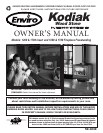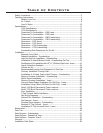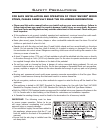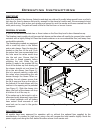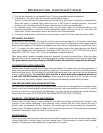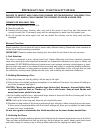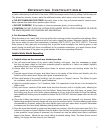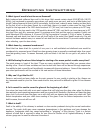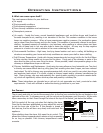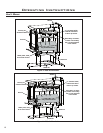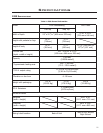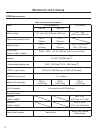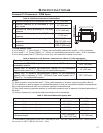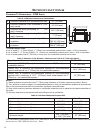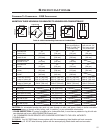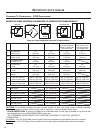
1. Plug the fan assembly into a standard three (3) prong grounded electrical receptacle.
2. Freestanding - turn the rotary fan controller to the desired setting.
Inserts - an auto/off/manual rocker switch allows the fan to be turned on manually, or automatically.
When this switch is pushed right toward the unit, it will be set to manual operation; the center
position is off, and when pushed left away from the unit, it will be set to automatic.
3. In automatic mode (& for freestanding units), set the rotary switch to the desired setting, once
operating temperature is reached, the fan temperature sensor will turn the fan on. When the unit
cools down, the fan temperature sensor will shut the fan off automatically.
4. In manual mode (Inserts only) the fan can be turned on and off any time using the rotary switch.
REPLACING THE GLASS:
Never strike or slam the door, hit the glass or let burning wood rest against it. If the glass cracks when
the re is burning, do not open the door until the re is out and do not operate the stove again until the
glass has been replaced. If the glass is damaged in any way, a factory replacement is required (see “PARTS
LIST”). To remove the door, open and lift. To replace the glass, remove the steel retaining clips and all
loose glass. Replace only with Neoceram 5 mm glass 16.61” (422 mm) x 10.63” (270 mm) and wrap the
edges with 0.125” (3.2 mm) x 0.5” (13 mm) self-adhesive berglass gasket.
Wear gloves when handling damaged glass door assembly to prevent personal injury. When the glass
door assembly is being transported, it must be wrapped in newsprint and tape and/or a strong plastic bag.
The glass must be purchased from an ENVIRO dealer. No substitute materials are allowed.
CLEANING THE PLATED SURFACES:
Painted faces should be wiped with a damp cloth periodically. If a plated door has been purchased, it
should be unpacked carefully to avoid getting anything on the surface of the nish, including cleaners,
polish and nger prints. It is important to note that ngerprints and other marks can leave a permanent
stain on plated nishes. To avoid this, give the face a quick wipe with denatured alcohol on
a soft cloth BEFORE lighting the replace. Never clean the door when it is hot. Do not use other
cleaners as they may leave a residue, which can become permanently etched into the surface.
FIRE EXTINGUISHER AND SMOKE DETECTION:
All homes with a solid fuel burning stove should have at least one re extinguisher in a central location
known to all in the household and a smoke detection devise in the room containing the stove. If it sounds
the alarm, correct the cause but do not deactivate. You may choose to relocate the smoke detection
devise within the room; DO NOT REMOVE THE SMOKE DETECTOR FROM THE ROOM.
CREOSOTE - ITS FORMATION AND REMOVAL:
When wood is burned slowly, it may produce tar and other vapors that, combined with moisture, form
creosote. These vapors condense in the relatively cooler chimney ue of a slow burning re and, if
ignited, make an extremely hot re. Therefore, the smoke pipe and chimney should be inspected bi-
weekly during the heating season to determine if a build-up has occurred. If creosote has accumulated
it should be removed to reduce the risk of a chimney re.
MAINTENANCE:
At the end of each heating season clean the chimney and the smoke pipe. If soot has accumulated above
the top bafe bricks, remove, clean, and then replace them. If the secondary air tube is badly eroded,
replace it. Replace worn door gaskets and broken bricks as needed.
Operating Instructions
5



